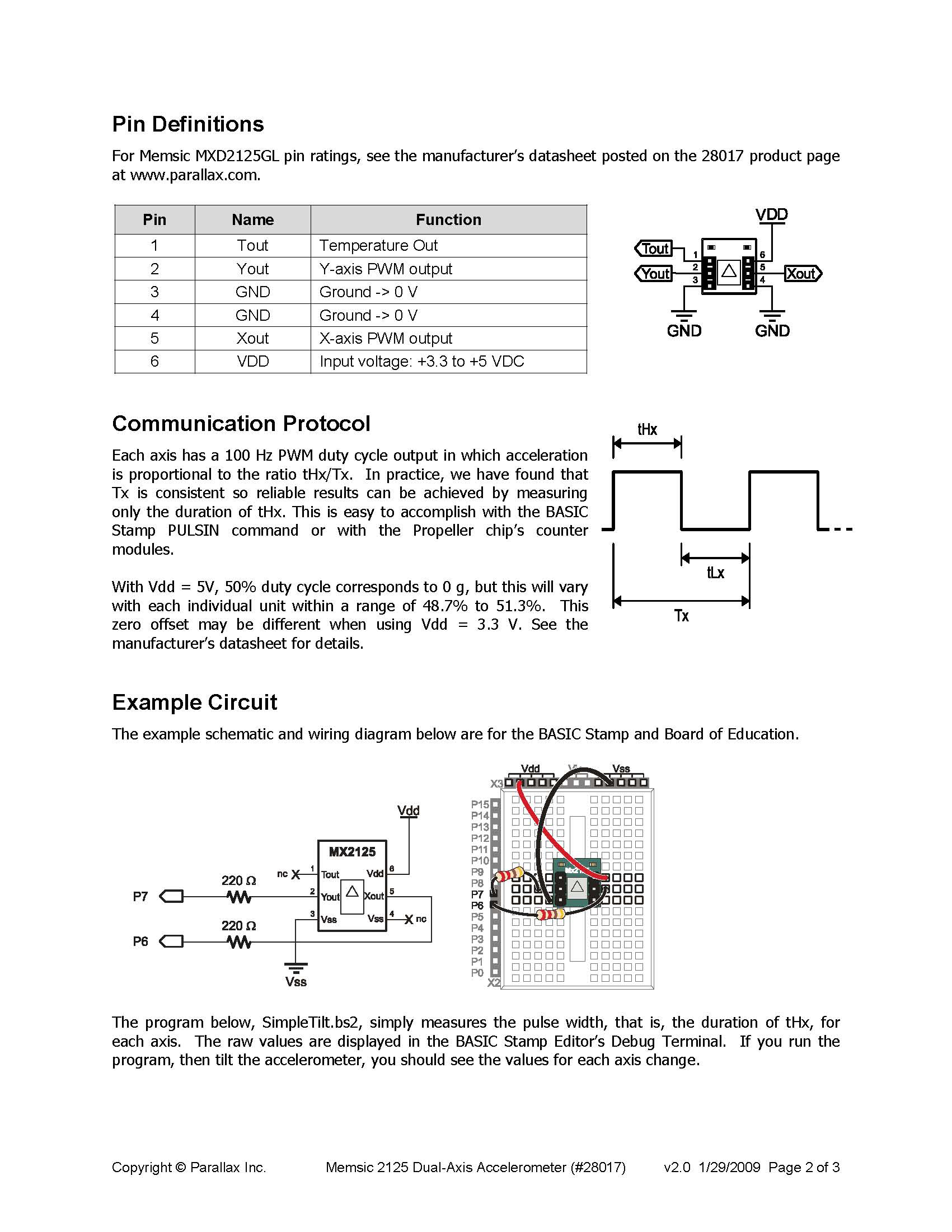Hi Ed,
(I'm answering your PM here since it related to this thread.)
Lets see if we can get the numbers straight on paper as a first step, then we'll move on to PBP.
According to the datasheet for the MXD2125 accelerometer (is that the one you're using). The formula is g=(T1/T2-0.5)/12.5%
The dutycycle of the output signal is 50% at 0g, that's where the subtraction of 0.5 comes from.
12.5% is the sensitivity of the device, it varies the dutycycle of the output signal 12.5% per g.
At +1g the dutycycle is 50+12.5=62.5%, the numbers becomes (0.625-0.5)/12.5% = 1g
At -1g the dutycycle is 50-12.5=37.5%, the numbers becomes (0.375-0.5)/12.5% = -1g
12.5% is the same as dividing by 12.5/100 which is the same as dividing by 0.125 which is the same as multiplying by 8.
According to the datasheet the acceleration at 30° is 0.5g which corresponds to a dutycycle 56.25% (50% is zero g, the output swings 12.5% per g so 50+6.25), lets run those numbers on paper:
(0.5625-0.5) * 8 = 0.5g
It all seems to work out on paper - wohoo!
What to do in PBP (before continuing I must point out that I haven't actaully tested this, hopefully I haven't messed it up too badly....):
I see from your posts that you're now using LONGS which makes it a bit easier. Let's try with your 0° numbers first.
Obviously we cant just do 4927/9867 (the numbers you gave for 0°) because that will result in a number less than 0 which is not of any use to us. What we can do though is to multiply the T1 time by say 10000.
Code:
T1 VAR WORD
T2 VAR WORD
Duty VAR LONG
g VAR LONG
' Number for 0°
T1 = 4927
T2 = 9867
Duty = (T1 * 10000) / T2 ' Duty will now be 4993
g = (Duty - 5000) * 8 ' g will now be -56 which is equal to -0.0056
HSEROUT["Acceleration is: ", SDEC g/10, "mg",13]
Now, in your PM you said that at 30° your values are 4535/9578 but that only works out to a dutycycle change of about 2.65% when you really should be getting around 6.25%. However you also say that the result of 4535/9578 is 0.4491 which isn't the case so something seems to be wrong with your numbers there.
But lets for the cause of the exercise use some the theoretical numbers corresponding to 30°, 0.5g, 56.25% dutycycle
Code:
T1 = 5625
T2 = 10000
Duty = (T1 * 10000) / T2 'Duty will now be 5625 (56.25%)
g = (Duty - 5000) * 8 ' G will now be 5000 which is equal to 0.5G
HSEROUT["Acceleration is: ", SDEC g/10, "mg",13] ' should print 500mg
That's the acceleration part, when that works I suspect you want to convert the acceleration value into an actual angle....
/Henrik.

Bookmarks